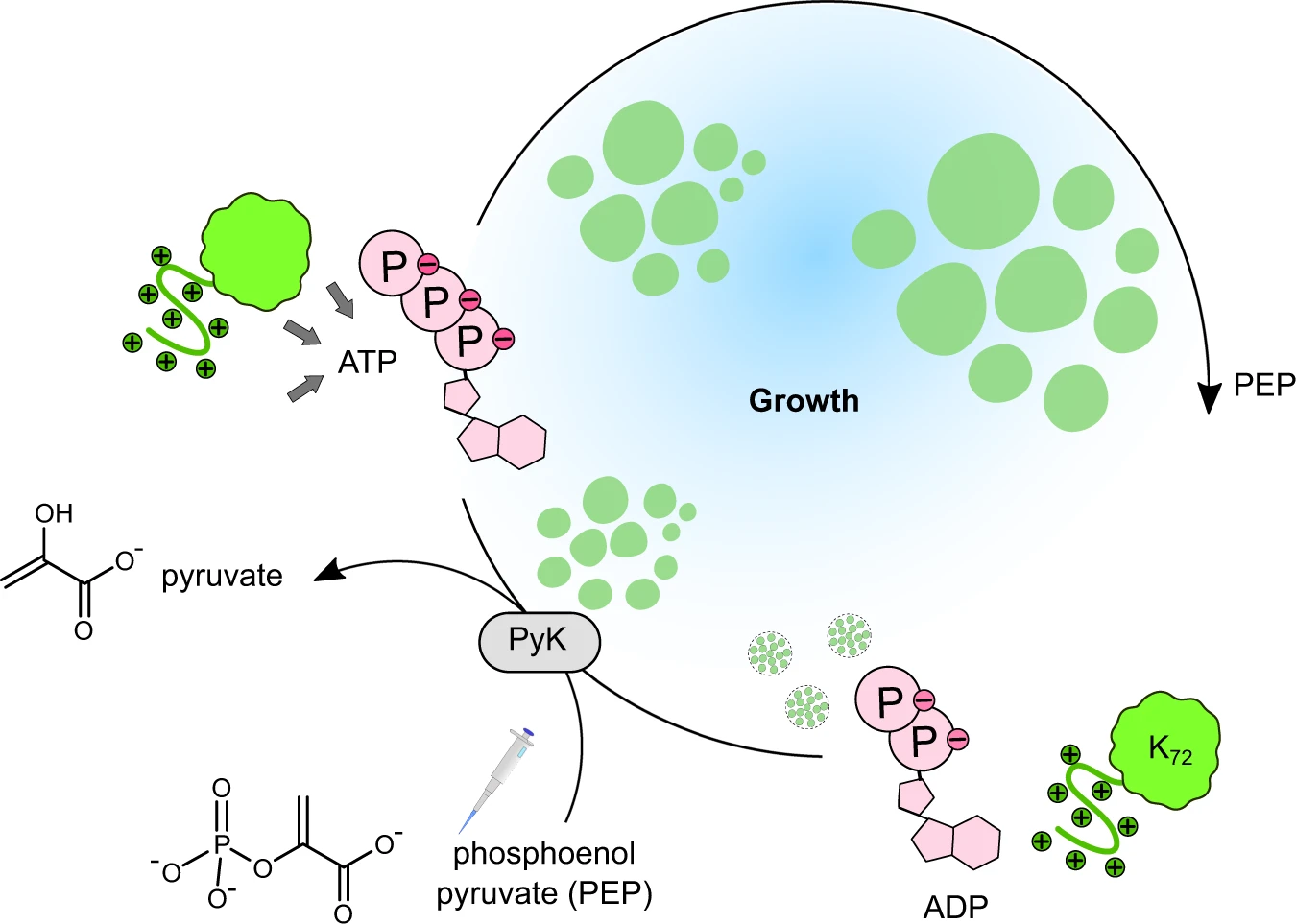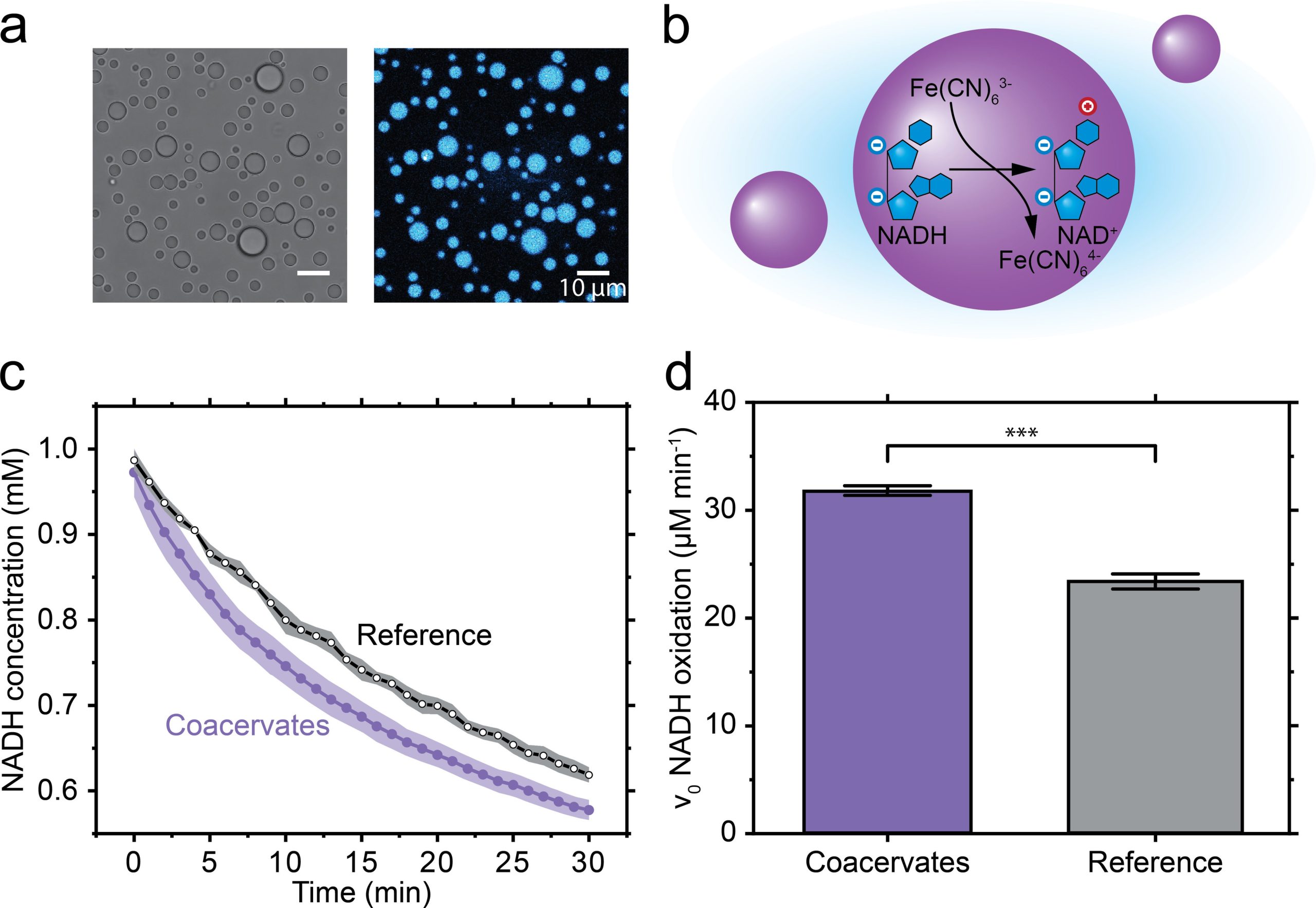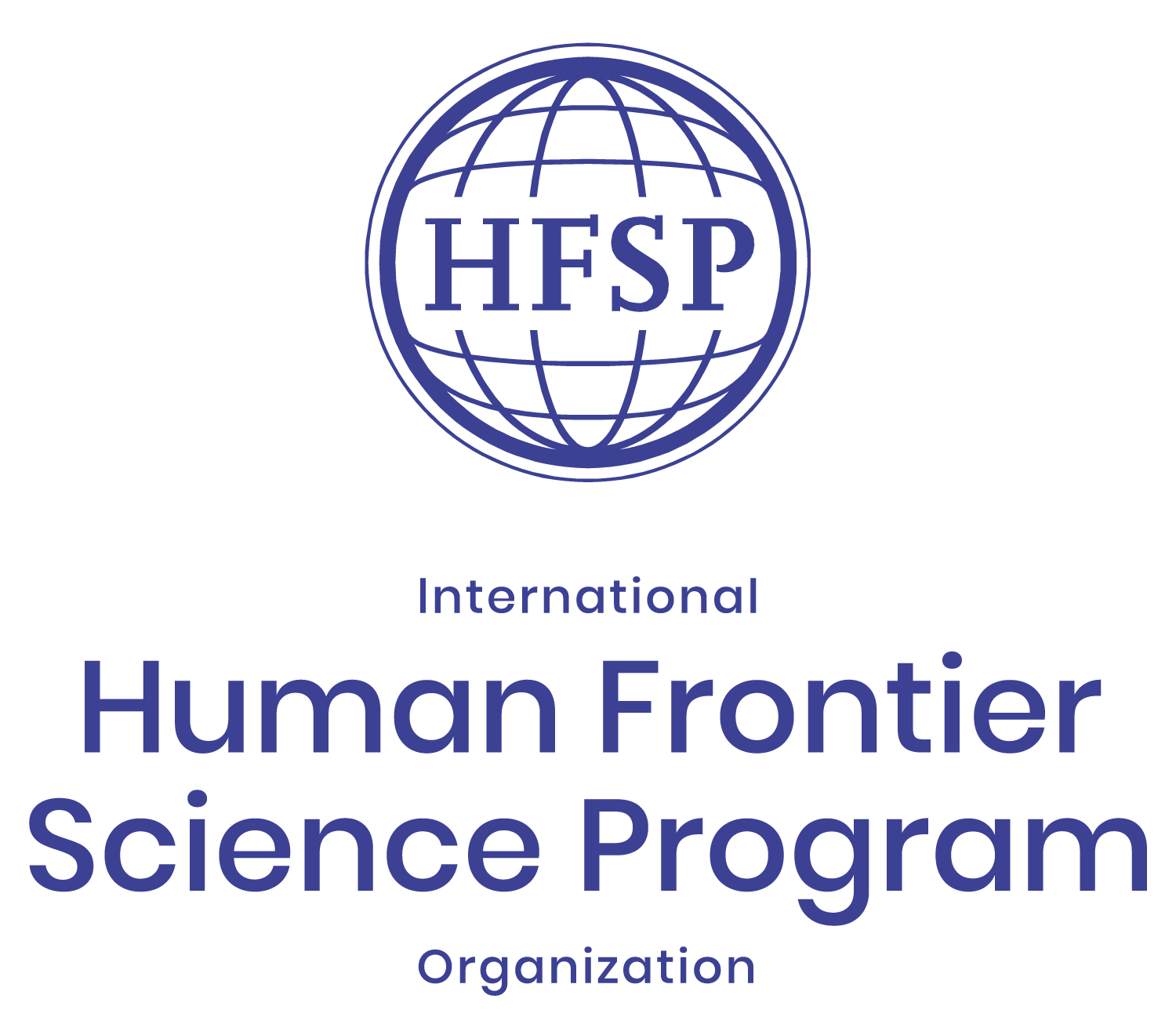Coacervates and Soft Interfaces
Radboud University
Institute for Molecules and Materials
Protocells
We’re interested in the origin of life. How can chemical reactions give rise to something we recognize as being alive? What did the first generation of cells on the early Earth look like?
To answer these questions, we investigate coacervate droplets as model ‘protocells’ (precursors to modern day cells). Coacervates are formed through weak multivalent interactions between peptides, proteins, RNA and/or small ionic molecules, which lead to liquid-liquid phase separation into droplets that are separated from the surrounding solution. These coacervate droplets provide a promising model for protocells, as they can easily concentrate essential molecules inside and locally increase reaction rates.
We investigate how such coacervate protocells could have been formed through chemical reactions on the early Earth and how they can support essential features of life such as growth and division, replication of genetic information, metabolism and mobility. We employ microscopic techniques, synthesis of coacervate materials and kinetic analysis of reactions to elucidate the role of coacervate protocells in the origin of life.

Key publications:
1. Nakashima, K. K., van Haren, M. H., André, A. A., Robu, I., & Spruijt, E. (2021). Active coacervate droplets are protocells that grow and resist Ostwald ripening. Nature Communications, 12(1). https://doi.org/10.1038/s41467-021-24111-x
2. Abbas, M., Lipiński, W. P., Nakashima, K. K., Huck, W. T., & Spruijt, E. (2021). A short peptide synthon for liquid–liquid phase separation. Nature Chemistry, 13(11), 1046–1054. https://doi.org/10.1038/s41557-021-00788-x
3. Smokers, I. B., Haren, M. H., Lu, T., & Spruijt, E. (2022). Complex coacervation and compartmentalized conversion of prebiotically relevant metabolites. ChemSystemsChem. https://doi.org/10.1002/syst.202200004




